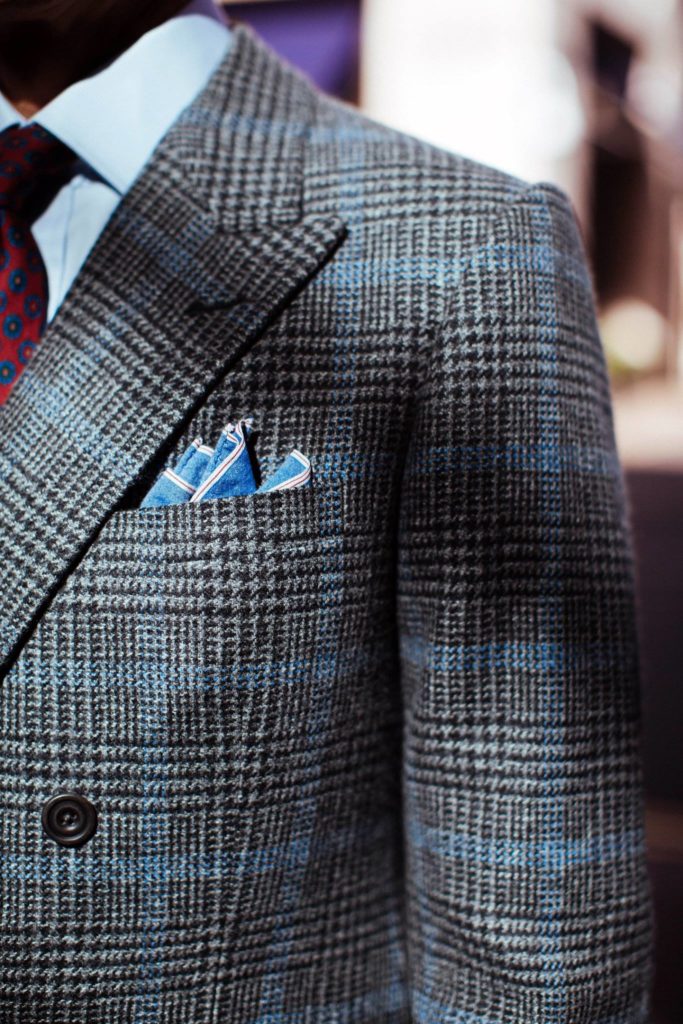Pattern matching in bespoke tailoring and bespoke shirt-making refers to the process of aligning patterns and design details such as stripes, checks and other repeated motifs, across different sections of the garment.
Pattern Matching

Seamless
Key areas where this can be seen are the various seams, collar and other critical points of the garment, such as the sleeves and pockets, so that they seamlessly flow from one section to another, creating a cohesive and aesthetically pleasing look.
The more detailed the pattern, the more skilled the bespoke cutter has to be to achieve impressive matching .

And, it tends to be time consuming too so it’s rare to see it done well in garments sold on the high street and highly unlikely in mass produced, factory made clothing.
This meticulous attention to detail is a hallmark of bespoke tailoring, where every aspect of the garment is carefully crafted to fit the individual’s body and preferences. We cut the required fabric specifically for each customer so pattern matching across the entire garment allows an extra layer of customisation and adds sophistication to the final product.
Is It Worth It?
Here at Dege & Skinner we pride ourselves on our skilled pattern matching, as can be seen here in this double-breasted suit jacket, made for menswear commentator and influential blogger, GreyFox.
Creative Director Nicholas De'Ath said, “It takes a lot of time and requires significant experience to do pattern matching well when making bespoke clothing. It’s something that we work hard to achieve here at 10 Savile Row and our customers appreciate the attention to detail very much. It’s often remarked upon when we deliver the finished clothing.”

Challenging
As you can imagine, this can be particularly challenging with complex patterns or fabrics with a large repeat, such as the tropical Hawaiian shirt seen here.
To quote our Head Shirt Cutter Tom Bradbury, “That particular highly repeated and intricate tropical pattern certainly presented a challenge in the cutting and making. Worth it though as we’ve sold quite a few of these relaxed leisure shirts, based on the quality of the pattern matching we were able to achieve.”

Alignment
So the pattern matching process requires time, skill, experience and an understanding of how to work with different types of fabrics and patterns. It often involves cutting multiple layers of fabric at once and meticulously aligning the pieces according to the pattern repeat. We may also need to adjust the placement of pattern pieces based on the specific measurements and proportions of the individual client's body.

When done well, good pattern matching adds an extra level of sophistication to bespoke garments, creating a finished product that not only fits impeccably, but also showcases the craftsmanship and attention to detail of the tailor. It’s a subtle yet important aspect of bespoke tailoring that helps elevate the overall look and quality of the finished garment.
Useful links: https://www.greyfoxblog.com/p/style.html
